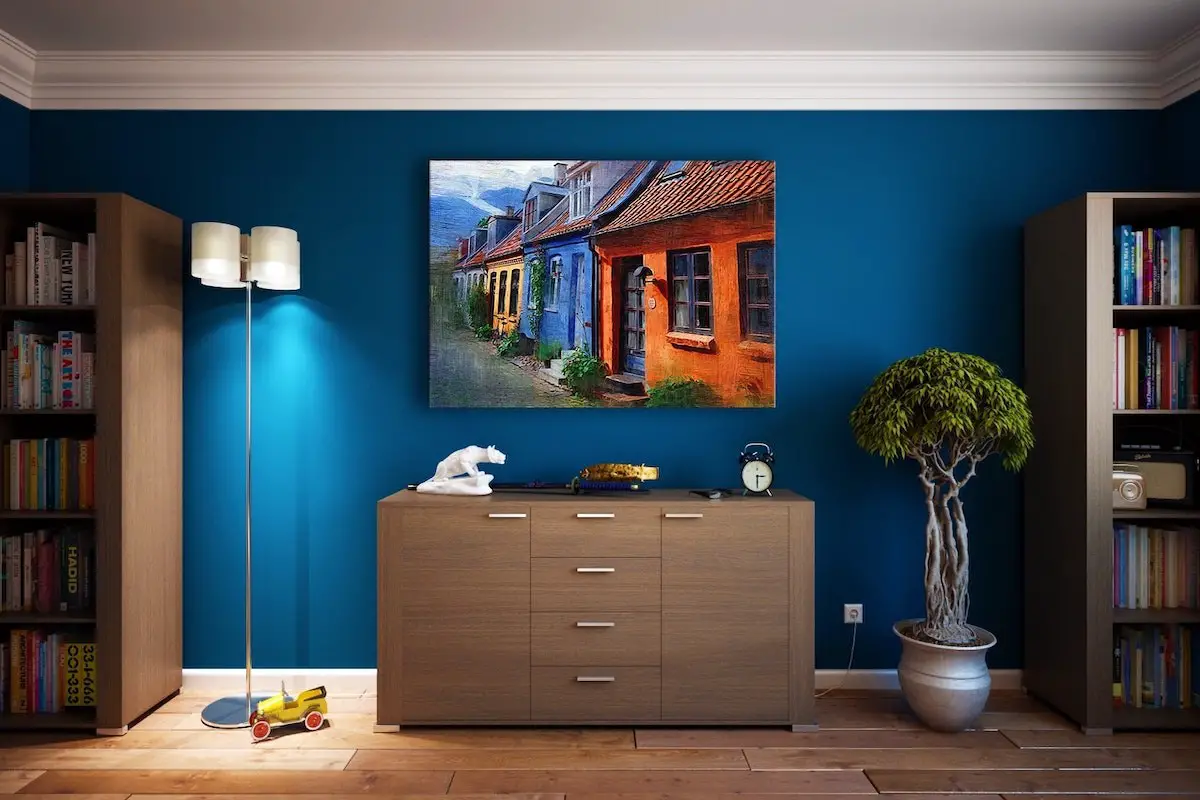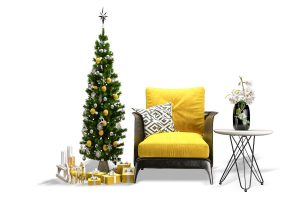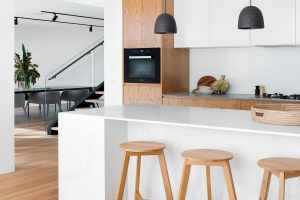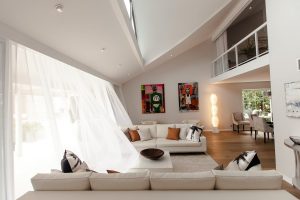I will also write a blog for the steps to paint but here I want to explain what are the paint types and what are they made up, what are what is natural paint and its differences with the chemical ones. And why you choose natural paint if the variables are ok.
Which Paint to Choose?
In the market, the type and ingredients can lead us two ways, either the chemical or the natural products.
While the former one is found almost all decoration shops and markets, the latter one is much more confusing and difficult to pick because there are lots of definitions and misconceptions on what the natural paint is.
The natural paint, eco-friendly, zero &/or Low VOCs (volatile organic compounds), vegan-friendly and kids friendly paints are named for most of the products in the market.
VOCs are organic (carbon-based) chemical compounds that are the main components of the paint unless it is natural paint. Low VOC or zero VOC paints contain a certain amount of VOC due to the content/combination of VOC.
So before going deep into the natural paints, it is good to understand what components make the paint.
What are the Components of all paints?
Paints compose of four elements that are;
- Pigment,
- Binder or Film former (also named as Resin, Vehicle or Drying Oil)
- Liquid (known also as solvent or carrier) and
- Additives.
1-Pigment
The pigment is responsible for colour and appearance. There are two types of pigments; first ‘The Prime Pigments’ and second ‘The Extender Pigments.’
Pigments may be natural, synthetic, inorganic or organic. For instance, the following ‘The Prime Pigments’ give the named colours by absorbing certain kinds of lights.
| Pigment | Chemistry | Colour |
| Titanium Dioxide | TiO2 | Clear white |
| Zinc Chromate | ZnCrO4 | Zinc yellow |
| Benzidine Yellows | Organic | Yellow-to-red |
| Chrome Oxide Green | Inorganic | Olive green |
| Phthalocyanine Green | Inorganic | Green-blue |
| Phthalocyanine Blue | Inorganic | Reddish-blue to yellowish-green |
| Ultramarine Blue | Organic | Deep blue |
| Pigment Brown 6 —> Red 170 | Inorganic | Red |
| Dioxazine Violet | Organic | Violet |
| Iron (II) Oxide | Inorganic | Black |
‘The Extender Pigments’ such as Calcite (Calcium Carbonate), Talc (Magnesium Silicate), Mica, Barites (Barium Sulphate), Silica and Zinc Oxide etc help to increase the durability, glossiness and reduce corrosion.
Some pigments are toxic, and they are not allowed to be used in paint making.
2-Binder
Binder – or other known terms as ‘Resin, Vehicle or Drying Oil- is the component that binds the pigment particles together and provides adhesion to the surface painted.
-
Oil-Based Binders:
As understood from the title these paints lined by any oil such as linseed and soya. Sometimes decorators prefer to use alkyds because it dries faster and harder than ones bonded with oil.
The film that is created is less permeable for moisture and may be more prone to blistering.
-
Latex-Based Binders:
They consist of solid, plastic-like materials dispersed as microscopic particles in water with a milky-white appearance. In the end, the paint has microscopic openings allowing the moisture vapour to pass through so that create a better damp proof.
Some common binders are; alkyd resins, acrylic resins, phenolic resins, urethane resins (polyurethanes), epoxy resins and chlorinated rubber.
3- Liquid
In easy words, binder – or known also as solvent or carrier – provides the way for the pigment and the binder to go from container to surface.
It works in simple that the liquid component of the paint evaporates, leaving behind the solid particles the pigment and the binder.
- The paint thinner, denatured alcohol, or lacquer thinner are the options of liquids for alkyd (oil) based paints.
- For latex-based paints, the carrier is primarily water. It is important to note that thinning paint that is adding liquid reduces the solids content, and thus reduces the effectiveness of the paint.
4- Additives
These are the additional ingredients added to latex paints to enhance application processes and properties. You need small amounts of any additive to get the best result.
There are a variety of options to use them, to ensure such as a smooth flow, flexibility, pigment continuity and correct colouring of the paint in a liquid state. You can avoid a contaminated smell, bacterial growth, fungi and insects. You can mitigate any bubbles, skin and increase the drying time.
Thickeners, catalysts, stabilizers, surfactants, fungicides, biocides, insecticides, deformers, co-solvents, plasticizers, emulsifiers, UV-stabilizers, texturizes, adhesion promoters, flatteners, anti-skinning agents are some additives that you can use in your paint.
Finish types
- Flat Finish:Relatively Rough finish type to look better the imperfections
- Matte Finish: More satin finish but the aim is still to hide the imperfections with high coverage
- Eggshell Finish: Idea is like that of the shell on an egg. It has less coverage for imperfections but good for wet spaces like bathrooms since it is washable.
- Satin Finish: More resilient to moisture and water than eggshell. Though it is shinier than eggshell, it has great protection to dirt and moisture.
- Semi-Gloss Finish: it is very shiny so it doesn’t keep the imperfections. However, it is perfect for wet communal spaces since it is durable to water. It is also used to emphasize the trims.
- High-Gloss Finish: It is the shiniest paint almost ended mirror-like surface. It is mostly recommended kitchen cabinets and furniture paint.
What are the types of paint?
1-Alkyd (oil) based paints
- Finishes are usually oiled/alkyd-based. Some also contain polyurethane for increased wear-resistance and silicone for ease of cleaning.
- May be usually thinned with white spirit. This is also used to clean brushes and rollers, but with some brands of paint, cleaning can be done with soap powder and water.
- May have higher VOC levels
- They are suitable for general use on all surfaces, indoors and out especially where maximum protection and durability is required.
- Use gloss for outside wood and metal, and for indoor situations subject to hard wear.
- They have gloss, semi-gloss (also called lustre or eggshell) and matt finishes.
Technical Details;
- The liquid form of oil-paint of 500 ml covers approximately 9 square meters (90 square feet) and non-drip of 500 ml covers approximately 6 square meters (60 square feet).
- Use suppliers’/decorator’s recommended undercoat not usually required with semi-gloss matt or non-drip glosses.
- Check with dealer if the paint is required to resist unusual conditions such as heat.
- Primer is essential on new unpainted surfaces that are to be finished with oil-based paintings.
- It is not usually necessary for new surfaces that are to be finished with emulsion paints.
- The type of primer you use depends on the surface you wish to paint.
- New and unpainted surfaces must be primed with wood, metal or plaster primer.
| Type of Surface | Primer | |
| Timbers/Wood | Ordinary Softwood | Wood |
| Ordinary Hardwood | Aluminium wood | |
| Highly Resinous Wood | Aluminium wood | |
| Oily Wood | Teak sealer or aluminium wood
Wash down with white spirit first |
|
| Building boards | Plasterboard | Plaster primer or thinned emulsion paint |
| Hardboard | Hardboard primer or thinned emulsion paint | |
| Chipboard | Wood | |
| Plaster, concrete, brick, Stone | Zinc Chromate Primer | Alkali-resistant |
| Metals | Iron and Steel | |
| Galvanized Iron | Calcium plum bate or zinc chrome | |
| Aluminium | Zinc chromate primer (rub-down first) | |
| Brass and Copper | Zinc chromate primer (rub-down first) | |
Wood
Sand the surface down so that it is quite smooth. Apply knotting to any knots and resinous patches, to prevent resin from bleeding’ through the paint. Seal the surface with primer. Certain woods, including teak, cedar and resinous West African timber, require special primers.
Plaster, concrete and brick
In new houses, allow a 12-month drying-out period before you apply any oil-based paint to these surfaces. If you do not want to wait 12 months you can put on two coats of emulsion paint as a temporary measure.
Emulsion paint allows the surface to breathe, and the wall can continue to dry out.
During the drying period, salts in the plaster and concrete cause a white surface deposit called efflorescence. This deposit should be wiped off, as it occurs, with a dry cloth.
Metal
Iron and steel must be thoroughly wire-brushed, scraped or cleaned with emery cloth to remove rust, then be primed immediately. Allow new galvanized iron to weather’ until it is dull before cleaning and priming.
Hardboard and wall-board
Prime the surface and fill all pin and screw holes before painting. Primer. A primer is essential on new unpainted surfaces that are to be finished

2- Emulsion or Latex-Based paints
- May contain vinyl or acrylic resins or a combination of both.
- Emulsion primers for wood. plaster building boards and other non-metallic outside surfaces are available.
- Some emulsion paints may be used as undercoats for oil-based paints. Emulsion paints are usually water-thinned and non-drip.
- They are appropriate for most of the interior elements, such as matt and silk types of interior ceilings and walls.
- Some brands are suitable for outside work.
- The interior wood plaster and non-metallic surfaces are good primers.
- On absorbent surfaces, thin the first coat as recommended by manufacturer later coats may be applied un-tinned for maximum obscurity.
- Usually applied directly to new unpainted or sound, previously painted surfaces.
Technical Details;
- Mainly give matt or silk finishes for walls and ceilings.
- Glossy finishes are also available, but they do not have the same gloss and durability of oil/alkyd glosses.
- They have matt, silk or sheen, and gloss finishes.
- Silk types better for kitchens and bathrooms, whereas glossy types are suitable for interior woodworks.
- The 500 ml of emulsion paint of covers approximately 7 square meters (70 square feet).
- Glossy surfaces must be well-rubbed down.
- Prime bare metal, including nail and screw heads, with an oil-based primer to prevent rust-staining.
Masonry paints:
- These may be emulsion or cement-based. Emulsion types usually have better durability and are available in a wider colour range.
- They are for external wall surfaces of brick, cement rendering. pebble-dash, etc.
- The 5 litres of masonry paint of covers approximately 15- 40 square meter (160- 430 square feet) according to surface.
- Applied direct to unpainted or sound and previously panted surfaces Powdery or flaking surfaces need a primer-sealer after thorough preparation
Which paint to choose?
When choosing paint for your home (workplace or home office too), it is important that the paint matches with space, surface, needs and methods. With all painting options you should think about the following general considerations;
General questions and preparation works;
1- Are you going to paint the interior or exterior architectural element?
2-What kind of surface are you going to paint? If it is exterior what kind of surface are you going to paint? Metal, wood or brick? If it is inside, do you need to correct the minor broken parts on the surface? You even may need the whole plastering before the painting. So you have to think about the drying time for the plaster before you can able to paint the wall.
3-With or without additional plastering works, you have to organise and get ready the room ready for painting. You have to carefully do your project management and plan how you will start painting.
Before you start decorating a room, try to finish all the odd jobs that need doing, such as replacing broken sash-cords, fixing badly fitting doors or having chimneys swept. If you leave these jobs until later, you will almost inevitably make a mess of your new paintwork.
Move the lighter pieces of furniture out of the room and stack the heavier pieces in the centre under the dust sheet.
Remove carpets and curtains and cover the floor, too, if it is tiled or polished boards.
What kind of spaces you like to paint;
4-If you paint inside your house, what kind of space are you going to pain?
Are they subject to damp and moisture even water like bathroom and kitchen? So you may consider a damp-proof paint.
5-The space like the living room and dining room are larger than wet spaces in your home, so you may search for budget-wise paint options. But you should check the pigment/liquid ratio of the paint.
Usually the cheaper the paint, the lesser the pigment and coverage ratio of that paint.
In these kinds of spaces, the surface corrections and preparations take more time than the smaller rooms.
6-In conservatories or sunrooms, the area exposed for painting is minimum. You have mostly glass all over. But there are solid walls and low parapets to be painted.
So you should be aware of the effect of the sun which changes the tone of the colour by the time. If you are able to paint frequently, it is not much a problem. Otherwise, think UV light resistance paints.
7- Do you have health drivers such as having a toddler in your room or expecting a baby, spending a lot of time in the room or you prefer the durability (hardness) as it is a commercial space like a coffee shop. Or you have structural challenges and you like to have mitigated mould with your paint.
Other constraints;
8- Do you have weather restrictions such as too warm or too cold so that you prefer a quick-drying product. Paint requires a minimum temperature of 50°F especially an exterior paint it is best to work best when closer to 70°F. Plus the lower humidity helps better painting and drying opportunity.
9- The maintenance is important to factor for choosing the type of paint. If you can able to paint annually, you may go with less durable but natural paints. If you plan to do it every 5 years, you may better think of an oil-based or latex painting with high pigment ratio.
Natural Paint?
After understanding the components of paint, now we can go look into what is a natural paint and what is the difference between a chemical (or toxic) one?
Natural paints are the only products that contain non-toxic chemicals and pigments because they contain no VOCs (volatile organic compounds). VOCs are chemical compounds that increase your carbon footprint since they easily enter the atmosphere by evaporation.
Their components are natural ingredients such as water, vegetable oils, plant dyes and natural minerals. For instance, Edward Bulmer Natural Paint company declares the components of the natural paint as following;
Water, cellulose, rosin, dammar resin, shellac, sunflower oil, castor oil, lavender oil, wood oil, linseed oil, orange oil, lecithin, fatty acids, surfactants, alcohol, aluminum soap, milk casein, bogenic binder, calcium stearate, xanthan gum as ‘Natural Renewable Materials.’
And clays, chalk, talcum, diatomaceous earth, mica, barite (baryte), quartz, drying agents, potash, titanium dioxide as ‘Natural Mineral Materials.’
The only Synthetic Materials they declared are the alkaline solution, isoparaffin, and thiazole.
Europe:
Follow the EU Eco labels. You see the licence holders from this link;
The EU Ecolabel is an independent accreditation system for goods and services that meet the strict environmental criteria of the scheme. There are a number of accreditations available but the EU Ecolabel is unique because it is truly independent of any profit-making organisation and not accreditation that can be ‘bought’.
For the US, EPA is responsible for the categorisation. According to EPA
| Description | Abbreviation | Boiling Point Range | Example Compounds | ||
| Very volatile (gaseous) organic compounds | VVOC | <0 to 50-100 | Propane, butane, methyl chloride | Propane, butane, methyl chloride | |
| Volatile organic compounds | VOC | 50-100 to 240-260 | Formaldehyde, d-Limonene, toluene, acetone, ethanol (ethyl alcohol) 2-propanol (isopropyl alcohol), hexanal | Formaldehyde, d-Limonene, toluene, acetone, ethanol (ethyl alcohol) 2-propanol (isopropyl alcohol), hexanal | |
| Semi volatile organic compounds | SVOC | 240-260 to 380-400 | Pesticides (DDT, chlordane, plasticizers (phthalates), fire retardants (PCBs, PBB)) | Pesticides (DDT, chlordane, plasticizers (phthalates), fire retardants (PCBs, PBB)) |
Existing guidance for Environment Agency Inspectors is given in a series of Process Guidance Notes which divide VOCs into three categories:
- Extremely hazardous to health, such as benzene, vinyl chloride and 1,2- dichloromethane.
- Class A compounds: those organic compounds that may cause significant harm to the environment. Examples include acetaldehyde, aniline, benzyl chloride, carbon tetrachloride, CFCs, ethyl acrylate, halons, maleic anhydride, 1,1,1-trichloroethane, trichloroethylene.
- Class B compounds: organic compounds of a lower environmental impact than Class A compounds.
Conclusion
Now that you know which paint to pick for your home, be sure to check out my post about the necessary brushes and tools that I will publish within a couple of days.




Terrific article